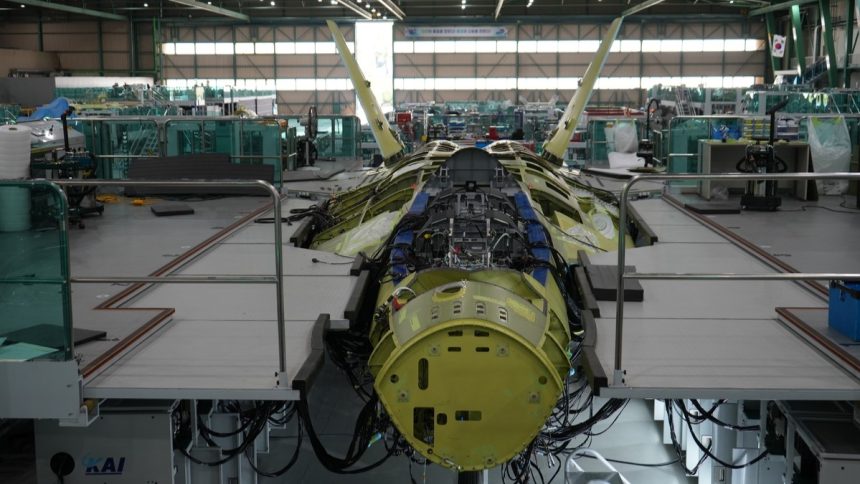The first production KF-21 is scheduled to be delivered to the ROKAF in 2026, following a contract of a first batch of 20 aircraft in 2024.
Korea Aerospace Industries (KAI) and South Korea’s Defense Acquisition Program Administration (DAPA) announced that the first production model of the indigenous KF-21 Boramae (Korean for “Hawk”) has entered the final assembly phase. The announcement came on May 20, 2025, following a ceremony at KAI’s headquarters in Sacheon.
The milestone comes ten years after South Korea launched the ambitious program to develop and build its own Gen 4.5 supersonic fighter jet, slated to replace the aging F-4 Phantom and F-5 Tiger II fighters. The mass production started in July 2024 and now, during the final assembly, the first aircraft will see all components finally coming together.
“It is thanks to the dedicated efforts of our researchers and developers that we have reached this historic moment of starting the final assembly of the KF-21, which will open the future of the Republic of Korea Air Force,” said Jeong Gyu-heon, the head of DAPA’s Future Power business division.
Visualizza questo post su Instagram
DAPA did not mention when the aircraft is expected to be completed. However, it mentioned that this first production KF-21 is scheduled to be delivered to the Republic of Korea Air Force (ROKAF) in 2026, after completing the service’s acceptance test flights.
The aircraft is the first of 20 KF-21s included in the 1.96 trillion-won (US$1.41 billion) deal which was signed by KAI and DAPA in June 2024, with 12 more aircraft in various stages of production. According to reports, the ROKAF plans to acquire a total of 120 KF-21s by 2032.
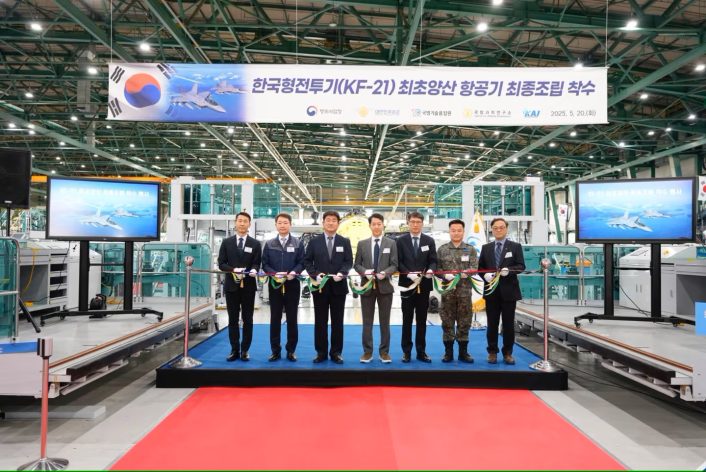
The KF-21
South Korea unveiled the first prototype of the KF-21 on Apr. 9, 2021. Dubbed the KF-21 “Boramae” (Korean for “Hawk”), the aircraft is seen as a low-cost, less-stealthy alternative to the U.S.-made F-35, that the ROKAF) plans to field by the 2030s to replace its fleet of ageing F-4E Phantom and F5E/F Tiger II aircraft, with the former already retired in 2024.
The description on KAI’s website mentions:
“The KF-21 is a fighter aircraft developed to retain the operational capability of the Republic of Korea Air Force (ROKAF) and satisfy the future operation concept of force battlefield as a multi-role fighter jet which features enhanced survivability, combined/joint operations, sustainment and logistics support system, air superiority and ground precision strike.”
The KF-21 is reported to have a ferry range of 1,550 nautical miles, with a Maximum Take-Off Weight of 56,400 lb, which includes a payload of 17,000 lb. Powered by two General Electric F414-GE-400K turbofans, the aircraft has a maximum thrust of 44,000 lb and a maximum speed of 1,200 knots and Mach 1.81.
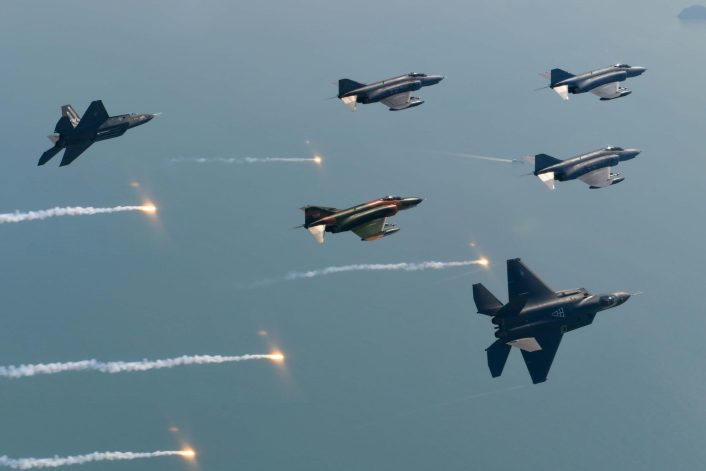
The KF-21 flew for the first time from Sacheon airport, home of Korea Aerospace Industries’ production facilities on Jul. 19, 2022, few weeks after it was spotted during taxi tests. Six prototypes, including two twin-seat aircraft, will support the testing campaign that is expected to last until 2026.
As we reported in the past, the KF-21 is strikingly similar to other 5th generation designs (although it is considered a 4.5 gen. aircraft). In particular, the South Korean jet shares much resemblance with the F-22 Raptor including the similar canted twin tails, general nose section and inlet shapings. Interestingly, the “Boramae” also sports a conformal gun above the left air intake, as the F-35A.
About 65% of the technology used on the KF-21 is of South Korean origin, including the active electronically scanned array (AESA) radar which was tested aboard a modified Boeing 737-500. The aircraft will also be equipped with European weaponry, such as the Meteor BVRAAM (Beyond Visual Range Air-to-Air Missile), IRIS-T (InfraRed Imaging System Tail-Thrust Vector Controlled) short-range air-to-air missile and, in future, the Taurus KEPD 350 air-launched cruise missile.
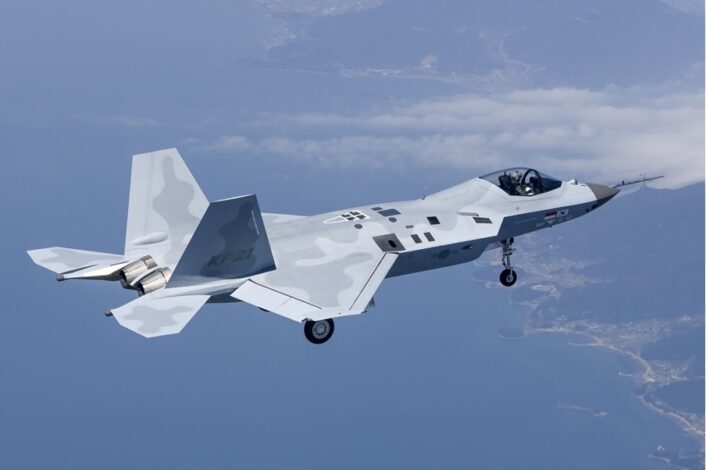
International participation and export
South Korea and Indonesia agreed in 2014 to jointly develop the fighter in a project worth 7.5 trillion won (6.3B US), with Indonesia committed to paying 20% of the total development cost. However, beginning in 2018, Jakarta sought to renegotiate its share of the cost.
In 2021, Indonesia then reaffirmed its commitment to the KF-21 program, confirming a year later that it resumed payment for its share of the costs. However, troubles were not over yet, as two Indonesian engineers were caught attempting to smuggle out several unauthorized flash drives out of KAI’s facilities in 2024, according to DAPA.
A joint investigation was launched by DAPA, the National Intelligence Service, and the Defense Counterintelligence Command to determine whether any classified information has been leaked. The Herald Corporation later reported that the drives did not contain any sensitive data related to the KF-21.
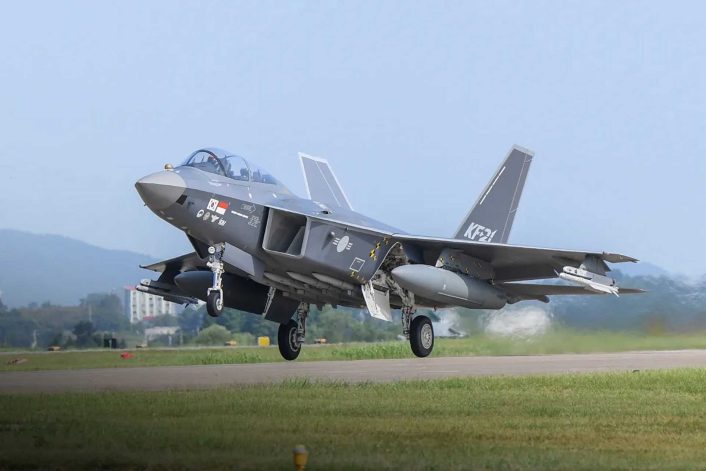
In February 2025, the two countries reaffirmed once again their cooperation after South Korea approved in 2024 a plan to reduce Indonesia’s contribution to the project to 600 billion won ($409 million) from the original amount of 1.6 trillion won. Indonesia initially planned to acquire 50 KF-21s, but it is unclear which are the current plans.
KAI is also looking at possible export contracts. Among the countries to which KAI and DAPA are willing to pitch the KF-21 are Peru and the Philippines. Another possible customer could be the United Arab Emirates, as the two countries signed a collaboration agreement that will allow the UAE to observe the aircraft once it is operational with the ROKAF.

